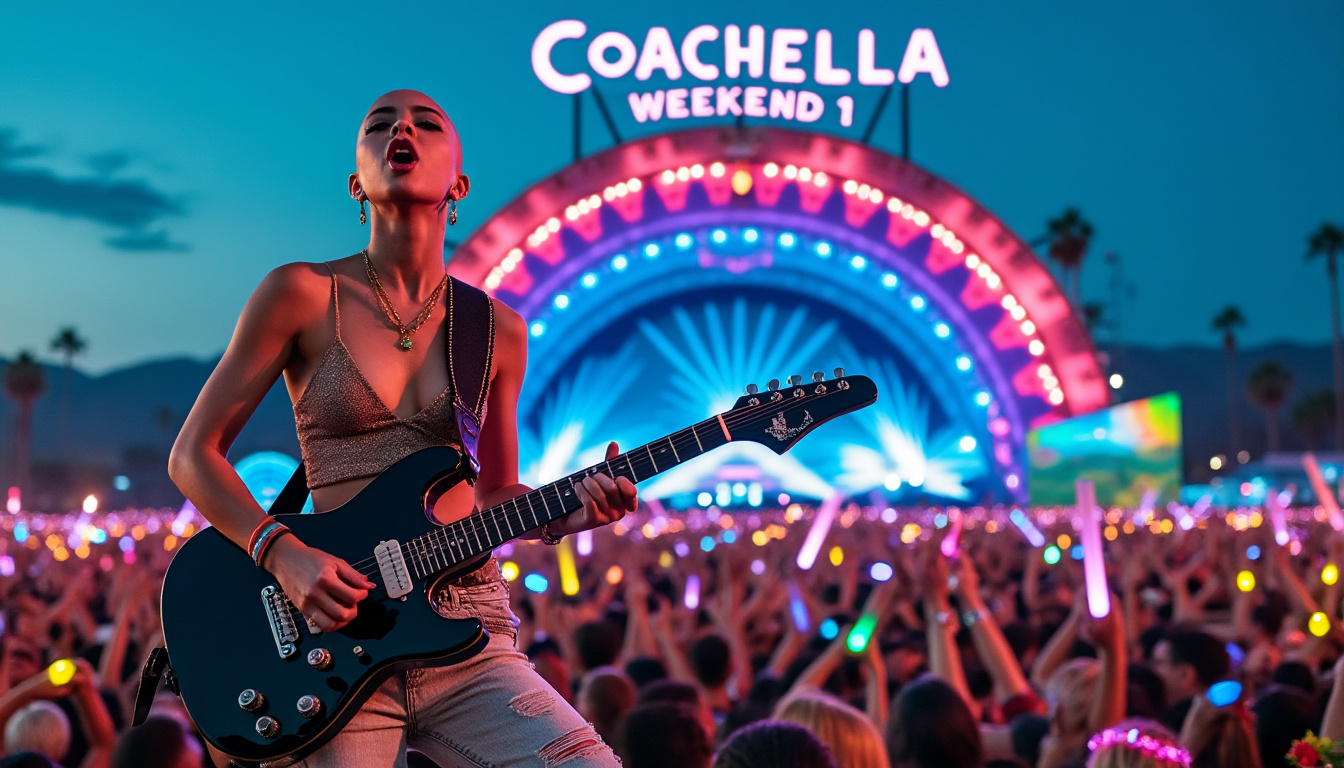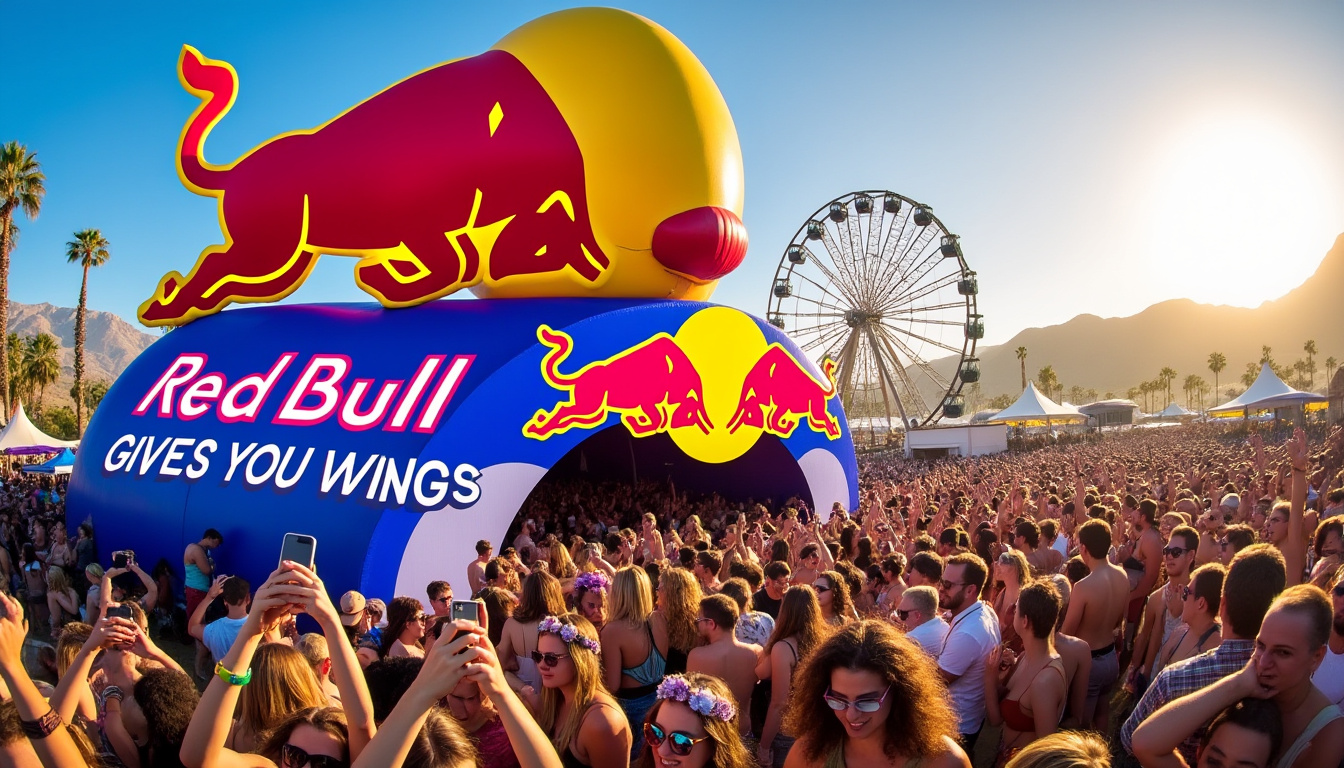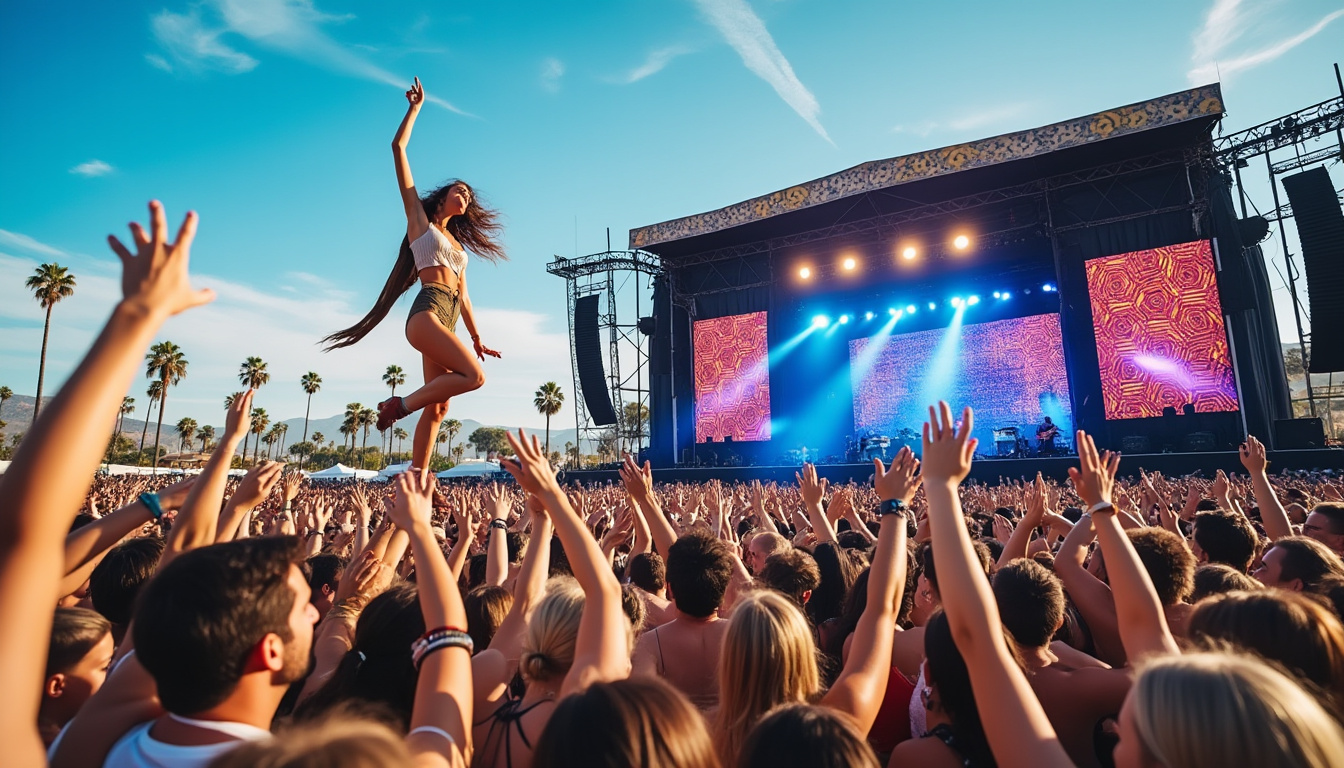Coachella, one of the most renowned music festivals in the world, is a dazzling spectacle that attracts thousands of fans each year. As artists take the stage, their performances become the highlight of the festival, both for fans and for the performers themselves. Yet, a lingering question persists in the minds of many attendees and music enthusiasts alike: how are these artists compensated for their electrifying performances? While the festival organizers have yet to reveal concrete figures for artist compensation, various reports shed light on the potential payouts, ranging from impressive sums to far more modest payments, depending on the artist’s stature and draw.
Understanding Artist Compensation at Coachella
Understanding the intricate web of artist compensation at Coachella requires an exploration into the factors that influence performance fees in the music industry. Factors such as an artist’s popularity, market demands, and the financial capacity of the festival play a crucial role in determining how much performers ultimately take home. Coachella has long been a launchpad for many artists and a secondary income source for established musicians eager to reach audiences at a more personal level.

Performance Fees: The Numbers Behind the Scenes
While each artist’s paycheck varies significantly, several reports have documented high-profile payments that highlight just how lucrative performing at Coachella can be. For instance, in 2022, The Weeknd was rumored to have secured an astounding $8.5 million for his appearance after Kanye West dropped out. This staggering figure is indicative of the shifting dynamics in contract negotiations for major festivals.
Numerous headlining acts have made headlines for their hefty paychecks, and while some artists choose to remain silent regarding their earnings, others provide mere glimpses into the financial realities of performing at such a prestigious event:
- Beyoncé: Reportedly earned between $8 to $12 million for her historic 2018 performance.
- Ariana Grande: Enticed audiences in 2019 with a remarkable $8 million for her headlining slot.
- Bad Bunny: Took home around $5 million as one of the major headliners in 2023.
These figures highlight a significant disparity in artist compensation, which can easily confuse fans who may perceive all performances as equal, irrespective of artist stature and market influence. Festival management carefully navigates its budget to accommodate both emerging talent and established stars while balancing profitability and the audience experience.
Factors Influencing Performance Fees
The festival’s ability to offer lucrative paydays hinges on several key variables:
- Artist Popularity: Well-established artists with large followings often command higher fees due to their assured appeal, such as Beyoncé or Ariana Grande.
- Sponsorship Deals: Festivals like Coachella often benefit from extensive sponsorship deals that allow them to fund more significant payouts to artists.
- Ticket Sales: The volume of ticket sales directly correlates to how much revenue is available for artist compensation. High demand can lead to more significant payouts.
- Negotiation Skills: An artist’s management and legal teams play a crucial role in securing the best deals possible, negotiating performance fees that reflect the artist’s worth.
This interplay of factors ultimately shapes the landscape of payments across the festival, illustrating how live performances are influenced by strategic planning and market demands.
Notable Comparisons: Past and Present
To get a better sense of how artist compensation has evolved, one can observe the payments made to previous Coachella headliners as they reveal the trajectory of festival financials:
| Artist | Year | Reported Payment |
|---|---|---|
| Beyoncé | 2018 | $8 – $12 million |
| Ariana Grande | 2019 | $8 million |
| The Weeknd | 2022 | $8.5 million |
| Bad Bunny | 2023 | $5 million |
| Radiohead | 2004 | $1 million |
| Daft Punk | 2006 | $600,000 |
Examining these figures provides a fascinating insight into how the festival has become a lucrative platform for artists. As Coachella continues to evolve and attract bigger talents in the festival circuit, the performance fees are only likely to rise, fostering a complex relationship between financial viability and artistic expression.
Understanding the Impact of Performance Costs
As artists secure their financial futures through lucrative festival performances, the costs associated with their appearances often demand attention. Artists are not simply cashing in on their star power; they frequently invest heavily in their set design, staging, and overall performance quality. These expenditures can dramatically impact their net earnings from the festival.

Production Costs and Set Investments
Artists typically engage in extensive production plans that can range from elaborate stage designs to intricate choreography. For instance, Cardi B, who performed at Coachella in 2018, disclosed that she spent a staggering $300,000 just on creating her performance set while only receiving $70,000 per weekend. Her experience highlights the often unseen financial burden that accompanies high-profile performances.
When investigating production costs, several factors come into play:
- Set Design: Unique and eye-catching visuals are crucial for standing out at the festival and can entail significant investment.
- Choreography: Professional dancing, which is often a part of live performances, requires skilled artists and therefore adds to overall costs.
- Technical Equipment: Cutting-edge audiovisual equipment can be expensive, ensuring that the performance meets audience expectations.
These financial expenditures illustrate how the visible glamour of Coachella performances can often eclipse the reality of artists’ financial struggles, prompting deeper reflections on the economics of live entertainment.
Fan Perception and Expectations
The high stakes of Coachella’s performance fees and artist expenditures influence fan perceptions and expectations. Attendees may assume that all performances yield massive financial returns for artists, leading to misunderstandings regarding the actual dynamics at play. While festivals generate substantial revenues from ticket sales, every artist’s situation is unique and reflects a blend of personal investment and market potential.
Notably, the music industry increasingly depends on festivals as a revenue stream for artists. Fans frequently enjoy the festival atmosphere while navigating a range of expectations, from unforgettable performances to extensive merchandising opportunities.
- Audiences anticipate high-quality performances: Fans expect visually stunning shows, which artistically justify high production costs.
- Merchandising: Selling concert merchandise can significantly boost an artist’s profit margin during festivals.
- Shared Experiences: Festival-goers often form connections based on shared musical experiences, driving demand for performances.
As live music culture flourishes, with festivals acting as the beat of the music industry, the relationship between artists, fans, and performances grows increasingly intricate.
Understanding the Bigger Picture
As the music landscape continues evolving, so too will the industry dynamics underpinning festivals like Coachella. Futuristic projections indicate further shifts in artist compensation structures, potentially redefining successful live performances. The festival functions not just as a stage for performances but as a vital ecosystem reflecting wider economic forces in the arts.
| Year | Total Revenue Generated | Projected Increase in Artist Compensation |
|---|---|---|
| 2023 | $700 million | 15% |
| 2024 | $750 million | 10% |
| 2025 | $800 million | 12% |
Through this lens, the future of artist compensation at Coachella reflects a delicate balance between profitability, artistic vision, and the festival’s evolving legacy.
The Role of Sponsorship and Partnerships
Sponsorship plays an instrumental role in shaping the economics of Coachella, significantly augmenting the funds available for artist compensation. The strategic partnerships established by festival management provide additional support and resources for the event, enhancing the experience for attendees and performers alike.

How Sponsorship Deals Affect Artist Pay
Coachella has successfully attracted top brands to partner with the festival, creating a mutually beneficial arrangement. These sponsorship deals allow Coachella to offer enhanced experiences, such as exclusive lounges and activations, while providing additional funding to cover high artist payments. Different factors come into play when assessing the impact of sponsorship on artist payments:
- Increased Budget: Sponsorship fees directly contribute to the total budget available for artist compensation.
- Brand Visibility: Major brands seeking visibility leverage festivals to enhance their profiles, thus willing to invest significant amounts.
- Experiential Marketing: Innovative brand tie-ins can create memorable moments, increasing festival attendance and ticket sales, subsequently benefiting artists.
In an era where artists are continually exploring diverse revenue streams, understanding the role sponsorship plays at Coachella is key to grasping how the modern festival economy operates.
Analyzing the Impact of Partnership Ecosystems
The growth of strategic partnerships extends beyond artists to encompass festival management and sponsors. These collaborations afford festivals the resources necessary to engage with audiences deeply while promoting brand collaboration opportunities. Successful festivals construct strong ties with sponsors, enabling artist compensation that reflects the demand for high-caliber performances.
| Sponsor | Key Partnership Activities | Expected Impact on Attendance |
|---|---|---|
| Heineken | Exclusive VIP lounges and brand experiences | Increased festival attendance by 20% |
| Absolut | Interactive brand installations | Enhanced guest engagement, improving overall experience |
| Amazon Music | Co-branded playlists and exclusive artist features | Boosted visibility for partnering artists, driving ticket sales |
This ecosystem reflects how smart partnerships elevate Coachella as a festival while simultaneously ensuring that artists are financially rewarded for their participation.
The Future of Artist Compensation at Coachella
As Coachella continues to grow in popularity and prestige, the future of artist compensation remains a topic of considerable interest within the music industry. Innovations in ticket sales, festival programming, and artist engagement will shape the festival’s landscape in the years to come, impacting how performances are valued financially.
Emerging Trends in Payment Structures
The music industry is witnessing shifts beyond traditional performance fees, contemplating new approaches to artist compensation that consider the full spectrum of their artistic contributions:
- Artist Royalties: A growing trend may involve allocating a percentage of festival ticket sales to artists, providing ongoing income.
- Profit-Sharing Models: Festivals may explore partnerships where artists share in ticket sales revenue, creating a more equitable financial arrangement.
- Virtual Performances: As digital spaces expand, artists may also see performance payments transition into the virtual world, widening their reach and revenue opportunities.
By breaking away from convention, festivals can better support artists while cultivating an engaging experience for fans, establishing new paradigms within the live performances landscape.
The Shift in Audience Engagement
As the festival landscape evolves, audience engagement continues to be paramount. Enhancements in technology and social media integration facilitate deeper connections between artists and fans. These changes allow for increased visibility based on fan behavior, resulting in an evolving metric to assess success beyond ticket sales alone.
With the rapid changes occurring within the music scene, Coachella stands at the precipice of transitions that not only influence artist compensation but also reshape the relationship between performers and their audience.
The future of artist compensation depends on adapting to the changing tides of consumer expectations and market demands, and this dynamic relationship will invariably influence how Coachella and other major festivals navigate their marketing, artist selection, and financial structuring moving forward.


